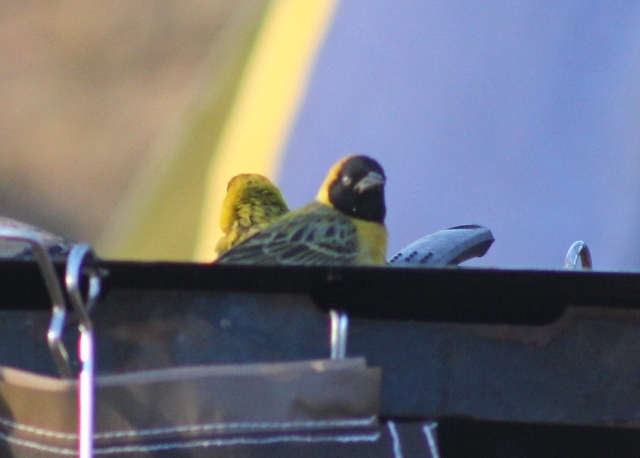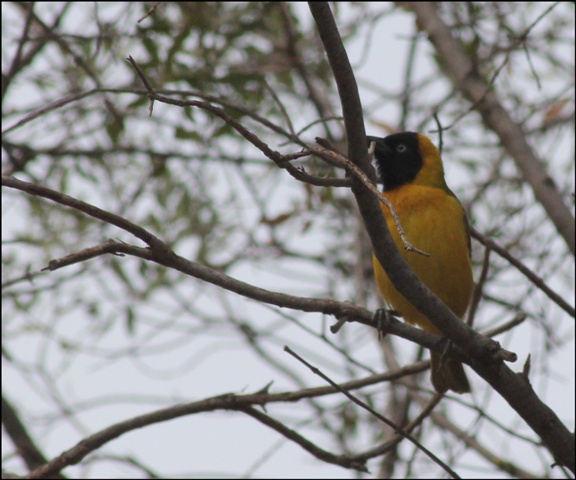OK! Let's get to some easy ones

 Genus Ploceus
Lesser Masked Weaver
Genus Ploceus
Lesser Masked Weaver, Ploceus intermedius The Lesser Masked Weaver (Ploceus intermedius) is a species of bird in the Ploceidae family. It builds its nests in large colonies, often alongside the Village Weaver and sometimes the Red-billed Buffalo Weaver. This species is commonly parasitised by the Diederik Cuckoo.
It is found in Angola, Botswana, Cameroon, Central African Republic, Republic of the Congo, Democratic Republic of the Congo, Djibouti, Ethiopia, Kenya, Malawi, Mozambique, Namibia, Rwanda, Somalia, South Africa, Sudan, Swaziland, Tanzania, Uganda, Zambia, and Zimbabwe.

Distribution range

Nest
 Description
Description
Length 13-14 cm.
Adult male: Yellow pale-eyed masked weaver; the black mask extends onto the front half of the crown, and has a notch above the eye. Male has a black thin bill.
Adult female has a pale pinkish-grey bill and has no mask and a dark eye.
All adults have the greyish legs, but very young juveniles can have pink legs. Juveniles in addition have dark eyes and whitish bellies.
Distribution
Occurs from Ethiopia through Kenya, Tanzania, Zambia and Angola to southern Africa. Here it is locally common across the northern half of the region, from northern Namibia to Mozambique and north-eastern South Africa.
Habitat
Habitats with or close to water, such as Acacia savanna, open woodland, riverine trees, reedbeds, swamps and mangroves.
Diet
It mainly eats insects (especially caterpillars) and nectar, doing most of its foraging in the tree canopy, gleaning prey from foliage and flowers.
Breeding
Polygynous, as males mate with multiple females in a breeding season, living in colonies of 20-30, rarely up to 200 nests. The nest is built solely by the male, consisting of a sturdy but thin-walled kidney-shaped structure, with a downward-pointed short entrance tunnel. It is usually made of narrow strips of grass, reeds or palm leaves and, if accepted by the female, she lines the interior with silky grey fibres. It is typically placed at the end of a branch, in the foliage of a tree or bush, in a patch of reeds, at the edge of a roof or suspended from a telephone wire. Egg-laying season is from August-March, peaking from October-January. It lays 2-4 eggs, which are incubated solely by the female for about 13 days. The chicks are mainly brooded and fed by the female, leaving the nest after about 15-16 days.
Parasitised by Dideric Cuckoo and (rarely) Klaas's Cuckoo.
 WC 6.3.2011
WC 6.3.2011
 WC 7.3.2011
WC 7.3.2011 WC 6.3.2011
WC 6.3.2011
 WC 7.3.2011
WC 7.3.2011
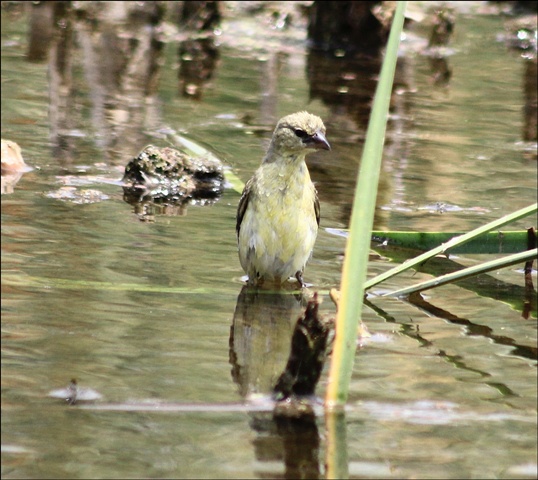

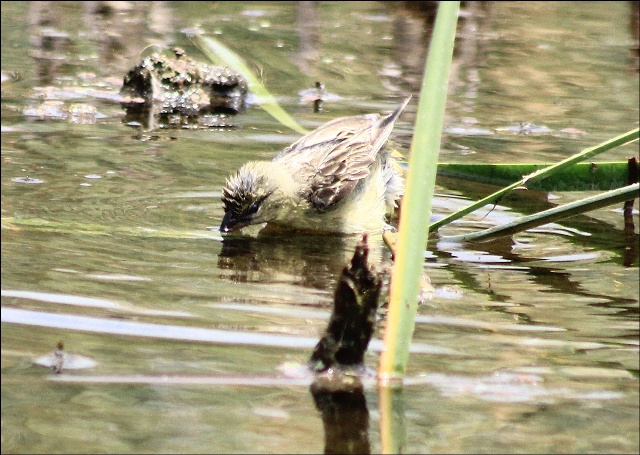
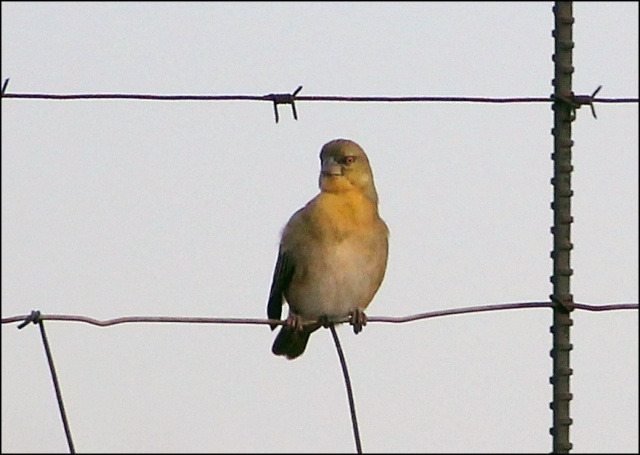
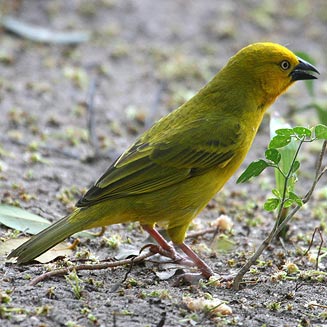
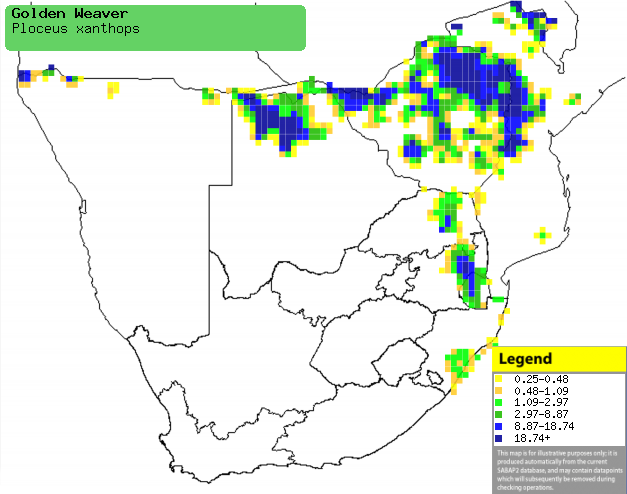

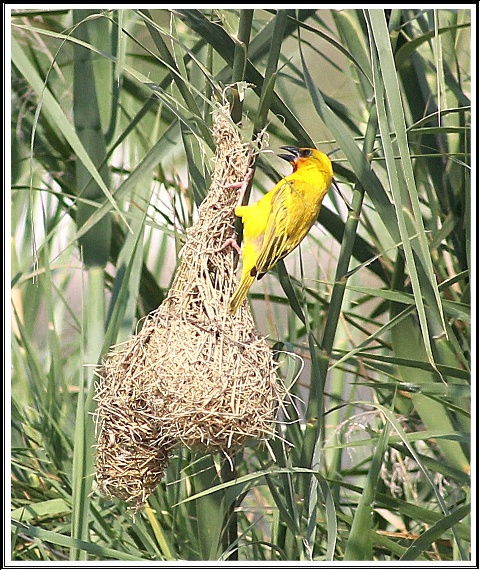
 11.9.2009
11.9.2009
